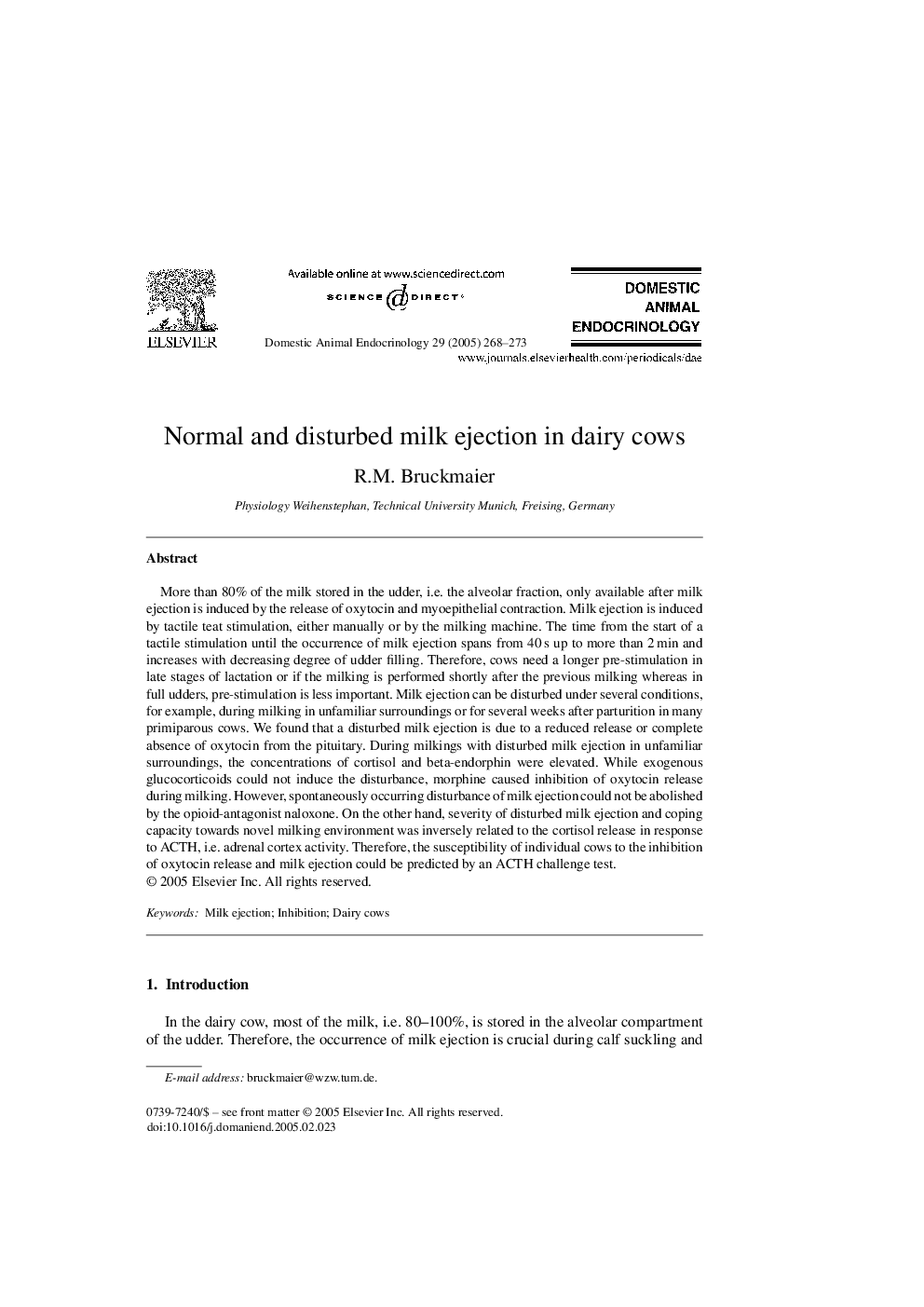| کد مقاله | کد نشریه | سال انتشار | مقاله انگلیسی | نسخه تمام متن |
|---|---|---|---|---|
| 8967166 | 1101394 | 2005 | 6 صفحه PDF | دانلود رایگان |
عنوان انگلیسی مقاله ISI
Normal and disturbed milk ejection in dairy cows
دانلود مقاله + سفارش ترجمه
دانلود مقاله ISI انگلیسی
رایگان برای ایرانیان
موضوعات مرتبط
علوم زیستی و بیوفناوری
علوم کشاورزی و بیولوژیک
علوم دامی و جانورشناسی
پیش نمایش صفحه اول مقاله

چکیده انگلیسی
More than 80% of the milk stored in the udder, i.e. the alveolar fraction, only available after milk ejection is induced by the release of oxytocin and myoepithelial contraction. Milk ejection is induced by tactile teat stimulation, either manually or by the milking machine. The time from the start of a tactile stimulation until the occurrence of milk ejection spans from 40Â s up to more than 2Â min and increases with decreasing degree of udder filling. Therefore, cows need a longer pre-stimulation in late stages of lactation or if the milking is performed shortly after the previous milking whereas in full udders, pre-stimulation is less important. Milk ejection can be disturbed under several conditions, for example, during milking in unfamiliar surroundings or for several weeks after parturition in many primiparous cows. We found that a disturbed milk ejection is due to a reduced release or complete absence of oxytocin from the pituitary. During milkings with disturbed milk ejection in unfamiliar surroundings, the concentrations of cortisol and beta-endorphin were elevated. While exogenous glucocorticoids could not induce the disturbance, morphine caused inhibition of oxytocin release during milking. However, spontaneously occurring disturbance of milk ejection could not be abolished by the opioid-antagonist naloxone. On the other hand, severity of disturbed milk ejection and coping capacity towards novel milking environment was inversely related to the cortisol release in response to ACTH, i.e. adrenal cortex activity. Therefore, the susceptibility of individual cows to the inhibition of oxytocin release and milk ejection could be predicted by an ACTH challenge test.
ناشر
Database: Elsevier - ScienceDirect (ساینس دایرکت)
Journal: Domestic Animal Endocrinology - Volume 29, Issue 2, August 2005, Pages 268-273
Journal: Domestic Animal Endocrinology - Volume 29, Issue 2, August 2005, Pages 268-273
نویسندگان
R.M. Bruckmaier,